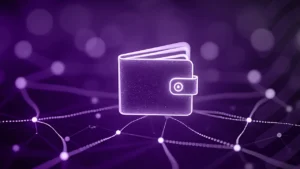Introduction: Trust Is the Currency of the Digital Age
In a world where business, banking, and onboarding have gone fully digital, verifying identity with confidence is more important than ever. But as technology evolves, so do cybercriminals — and one of their most dangerous tools is identity fraud.
From deepfakes to stolen photos, fraudsters are finding creative ways to bypass traditional verification systems. This is where liveness detection steps in a powerful safeguard that confirms a real human is present during the verification process.
In this article, we explore how liveness verification works, why it matters in the fight against digital identity fraud, and how organizations can implement liveness checks for secure, seamless user experiences.
What Is Liveness Detection?
Liveness detection is a biometric technology that determines whether the person being verified in a digital environment is a live human being and not a photo, video, or deepfake.
It is a critical layer in digital identity verification that enhances security by:
- Preventing the use of spoofed biometric data
- Ensuring the person is physically present
- Blocking bots and pre-recorded fraud attempts
There are two main types:
- Passive Liveness Detection – Analyzes biometric data during image capture, with no user interaction. It’s seamless and user-friendly.
- Active Liveness Detection – Requires the user to act (e.g., blinking, turning their head) to confirm they are real.
Why Is Liveness Verification Critical?
In digital onboarding and transactions, confirming someone’s identity is not just about matching a face to a photo ID; it’s about ensuring the face is authentic and present in real time.
Key Reasons Liveness Checks Are Essential:
- Protect Against Deepfakes: AI-generated faces and voice cloning are harder to detect without real-time presence checks.
- Combat Stolen Identity Documents: A fraudster with someone’s ID and photo can bypass basic verification without liveness detection.
- Enable Contactless, Remote Onboarding: Banks, fintech apps, and healthcare platforms rely on remote onboarding, which is only secure with strong identity protection.
- Compliance with Global Regulations: KYC (Know Your Customer) and AML (Anti-Money Laundering) frameworks increasingly recommend biometric and liveness checks for digital verification.
How Liveness Checks Work in Real-World Applications
Here’s how liveness verification is typically used in digital transactions:
- User Takes a Selfie or Video
The platform asks for a live capture of the user’s face using a smartphone or webcam. - Liveness Detection Software Analyzes the Capture
The system detects facial patterns, depth, motion, and texture to ensure the image isn’t a flat photo, mask, or screen replay. - Verification is Matched to ID Documents
The selfie is matched against the user’s government-issued ID to complete the verification process. - Real-Time Results
The system instantly approves or flags the session for manual review based on the liveness check results.
Implement advanced liveness verification into your onboarding and fraud prevention workflows here.
Industries That Rely on Liveness Verification
Banking & Fintech
To prevent account takeover and verify customer identity during onboarding and high-risk transactions.
Healthcare
For secure telemedicine sessions and protecting access to medical records.
eCommerce & Marketplaces
To verify sellers or buyers and reduce fraudulent activity on platforms.
Remote Work & eLearning
For secure logins to enterprise systems or online exams.
Benefits of Liveness Detection for Organizations
| Benefit | Description |
| Enhanced Security | Prevents spoofing, impersonation, and synthetic identity attacks |
| Faster Onboarding | Automates identity verification in seconds |
| Regulatory Compliance | Supports KYC, AML, and GDPR alignment |
| Improved User Trust | Builds confidence in secure, verified platforms |
| Cost Efficiency | Reduces manual reviews and fraud-related chargebacks |
Conclusion: Keep Fraud Out, Let Real Users In
As digital services continue to grow, so does the risk of identity fraud. Liveness verification is one of the most effective ways to stay ahead, ensuring that every digital transaction is backed by real human presence.
By integrating intelligent liveness checks, organizations not only enhance security but also build trust and streamline customer journeys. In a world of bots and deepfakes, verifying life has never been more essential.






